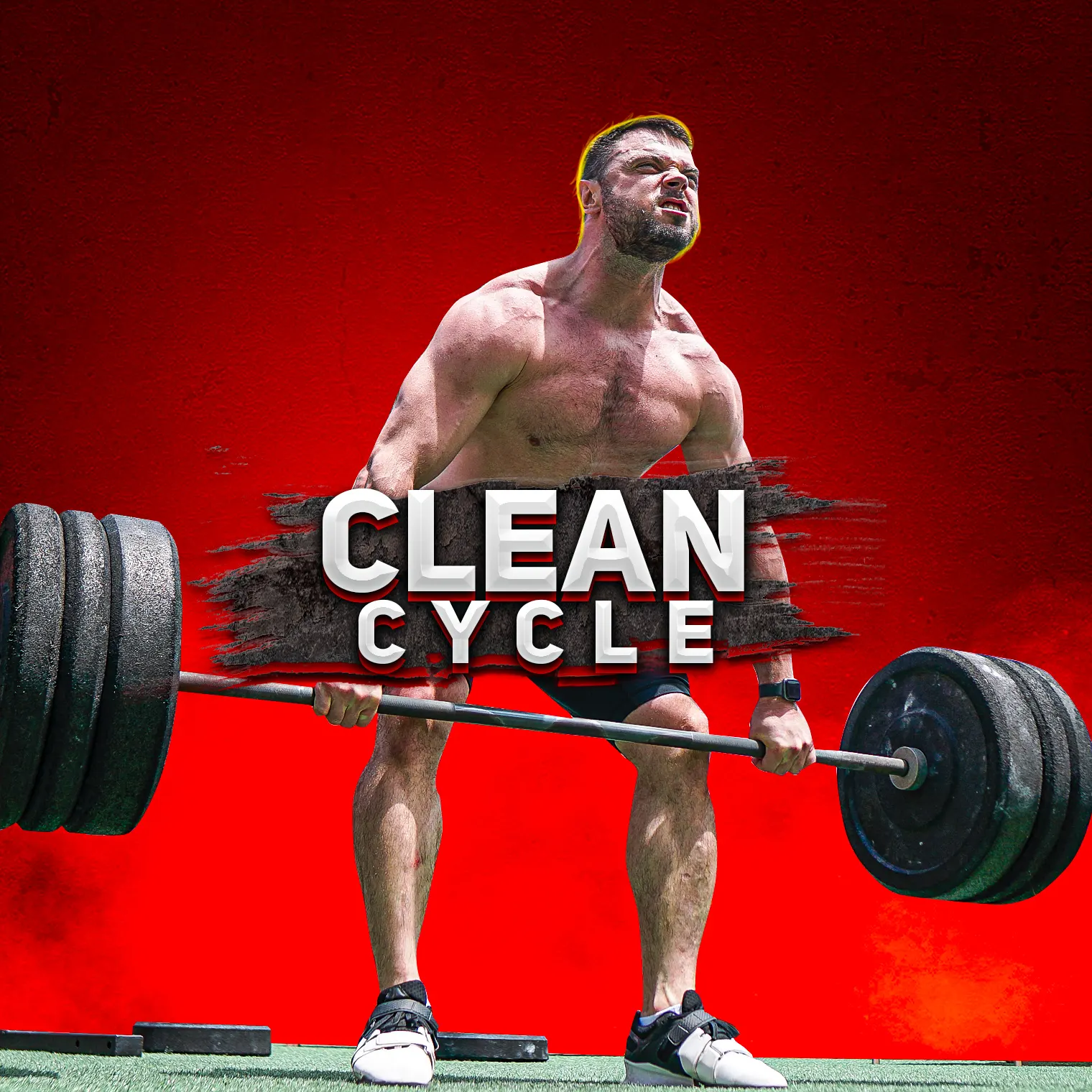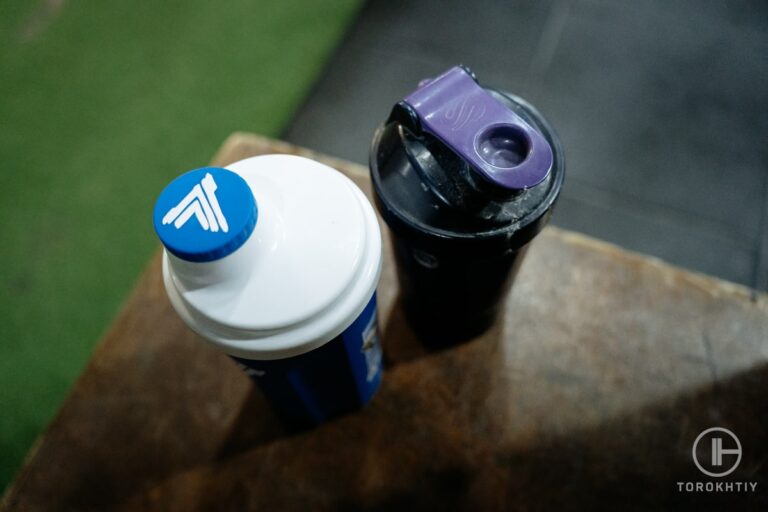Snatch vs Clean: Olympic Lifts Compared
Reviewed by: Oleksiy Torokhtiy (21 years of Oly Lifting experience)
Before understanding whether it is necessary to compare and look for similar elements in clean and snatch, let’s look at the features of these exercises. This article will help athletes and coaches improve their understanding of the biomechanics of these movements in order to improve the quality of lifting and the design of programs.
Where the bar finishes up is the main difference between both the clean and snatch. In the clean, you lift the bar from the platform to your shoulders, but in the snatch, you lift it from the ground to overhead position in one smooth motion.

What is Snatch?
Snatch is one of the exercises in Olympic weightlifting. During the competition, the snatch is performed first, and after it, the athletes perform the second exercise – Clean & Jerk. Snatch is a technically complex movement that requires speed, strength, agility, flexibility and mobility of the main joints
Snatch Pros & Cons
Positives:
Could be better:
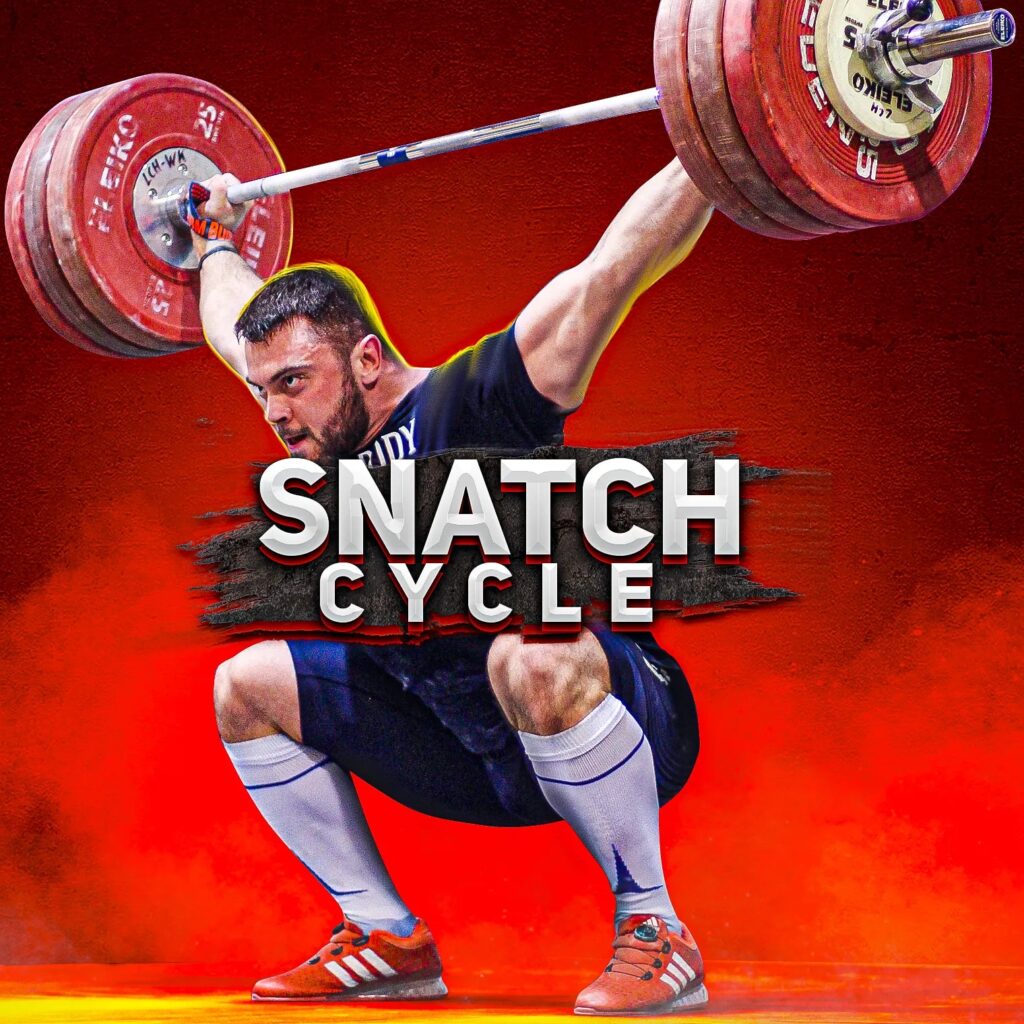
SNATCH PROGRAM
How to Do Snatch?
The Olympic Snatch consists of five phases:
1. Starting Position
The athlete takes the bar in hookgrip with a wide (snatch) grip, sits down and arches his back. In this position, the projection of the athlete’s shoulders should be slightly in front of the knees. The center of gravity is in the middle of the foot, and the arms are straight and relaxed.
2. Snatch Pull
The athlete pulls the bar from the platform as close to the legs as possible. His tasks: to maintain balance in the middle of the foot, cover the barbell with his shoulders, keep the muscles of the arms relaxed. The pull is performed until the moment when the athlete brings the barbell into the power position, the so-called “contact point”.
3. Power Position
The athlete sharply straightens the knee and hip joints – actually jumps up and actively directs his elbows up.
4. Turnover And Catch
After full extension, the athlete instantly switches the direction of movement of his body down, fixing the bar above his head on straight arms in a low squat position.
5. Recovery
From an overhead squat, the athlete stands on straight legs with a barbell above his head.
At competitions, after fixing the barbell, the judge gives the command to the athlete to lower the barbell to the platform.
What is Clean/Clean & Jerk?
The clean and jerk is also one of the exercises in Olympic weightlifting. During the competition, the clean and jerk is performed second.
Olympic clean and jerk is definitely a power and complex movement. It is clear from the name that it is divided into two sections.The first part – CLEAN: the athlete pulls the bar off the platform and lifts it to his shoulders, then JERK it off his shoulders in overhead position.
There are 3 JERK styles:
- split jerk – pushing the bar overhead into an athletic lunge
- power jerk – the athlete pushes the bar from his shoulders, spreads his feet to the sides approximately shoulder-width & fixes the bar above his head in a semi-squat, then straightens his knees
- squat jerk – the athlete copies the power jerk movement, but when fixing the bar above his head, he takes the position of a full squat, then rises to the fixation position
For the attempt to be recognized as successful by the judges, the athlete must hold the weight above his head on straight arms, straighten his legs, placing his feet parallel.
Clean Pros & Cons
Positives:
Could be better:
🔻CLEAN CYCLE Program
Crush Your CLEAN PR in 5 Weeks! 🏋️
🔥Achieve:
- New CLEAN Records.
- Master CLEAN variations.
- Focus on back and leg strength.
- Specific skills and drills for your CLEAN.
Highlights:
- ✅ 5 Days / Week
- ✅ Varied Lifts
- ✅ Strength & Technique
- ✅ Healthy Warm-Ups
Elevate your CLEAN game today! 💥
How To Do Clean?
Clean is a first part of Olympic exercise Clean & Jerk and it consist of 5 phases:
1. Starting Initial Position
The goal of the starting position is the effective angles for the pull and acceleration. The athlete places his feet shoulder-width apart, the feet are turned slightly to the sides, the balance is in the middle of the foot, the lower back is arched, the hands are in a hookgrip slightly wider than the shoulders
2. Clean Pull
The athlete pulls the bar as close to the legs as possible. His tasks: to maintain balance in the mid-foot, shoulders, keep the muscles of the arms relaxed. The pull is performed until the bar reaches the “contact point” level. In Clean, this position is from the middle of the thigh and a little higher.
3. Power Position
The phase of the exercise, when the knees & torso are a bit bent, the athlete stands on a full foot, the barbell is pressed to the thigh, the shoulder & knee joints are on the same vertical. The power position often looks like a jump. It creates maximum power through the synchronous work of the muscles of the back and legs.
4. Turnover & Catch
Right after full extension of the body, when the barbell is at the level of mid torso, the athlete changes his direction of movement down, rotates his elbows as quickly as possible and catches the bar in a low squat.
5. Recovery Up
After fixing the barbell on the shoulders in a deep squat position, the athlete must stand up. The fast transition from eccentric to concentric muscle mode is an essential technical component of the recovery period. This is the muscular contraction that occurs as you descend to full squat and quickly stand back up. After lifting from a squat, the lifter has a couple of seconds to prepare for the jerk.
The Difference Between Snatch and Clean
The story when they say about an athlete that he is a master of a snatch, but it didn’t work out with a C&J, is quite common. On the contrary, it also happens: when in a snatch of three attempts the athlete barely twists into one, and then in the clean and jerk you need to jump over all rivals in order to “catch” on the medal. That is why the question of the differences between snatch vs clean and jerk is very important.
One of the reasons for these problems is that coaches and athletes do not see the difference in technique between the two exercises. Therefore, training and learning are carried out according to the same requirements, which ultimately leads to the fact that the technical skill of one of their exercises suffers.
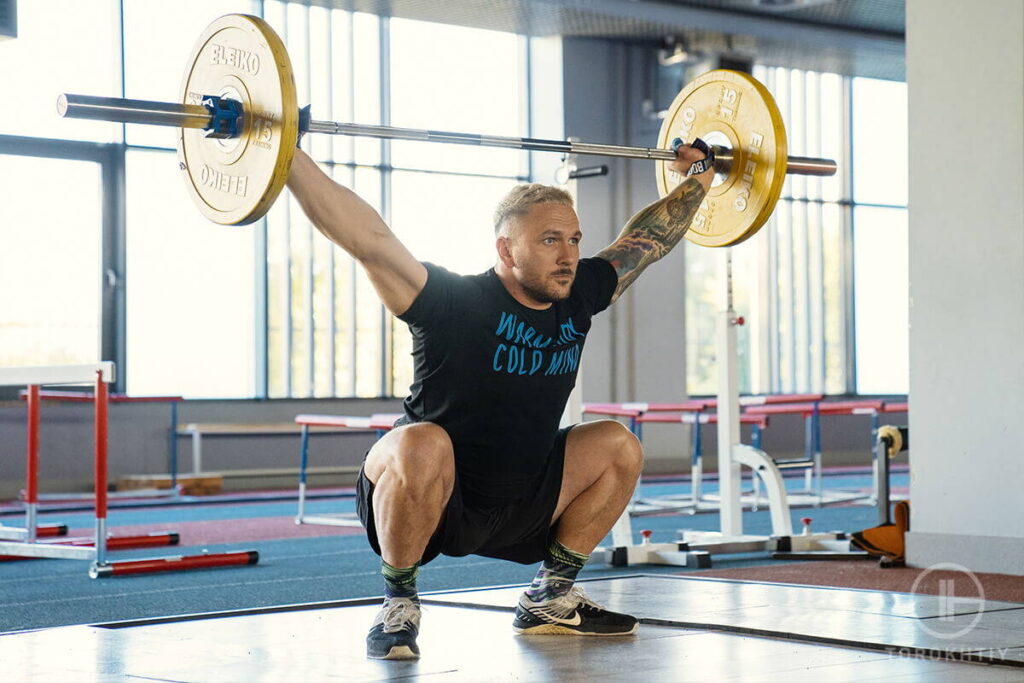
1. Complexity
Let’s start here. If you don’t know how to do a deadlift, you have no business with a power clean. Deadlifts are easier to learn and form the first phase of power cleans. Start there.
If you’re an accomplished deadlifter looking to try something new, power cleans just might be for you. Even then, however, you’ll need professional help to get going.
Deadlifts take this category because they’re so much easier to do.
So what is the difference between snatch and clean?
Let’s start with the fact that a fairly large number of technical parameters of these exercises differ not only visually, but statistically. Back in 1978, Soviet sports scientists (V. Frolov, A. Lukashev) conducted research and came to a number of conclusions. Basically, the differences are associated with a significantly higher weight (14-30% on average) and a narrower grip in the clean. In the starting position, the upper body is 10-15 cm higher than in the snatch. The angles in the knee joints in cleanest (average 89°) are greater than in the snatch (74°) by 15° (20%). It should be noted that in clean all phases of the movement, the angles in the knee joints are more open.
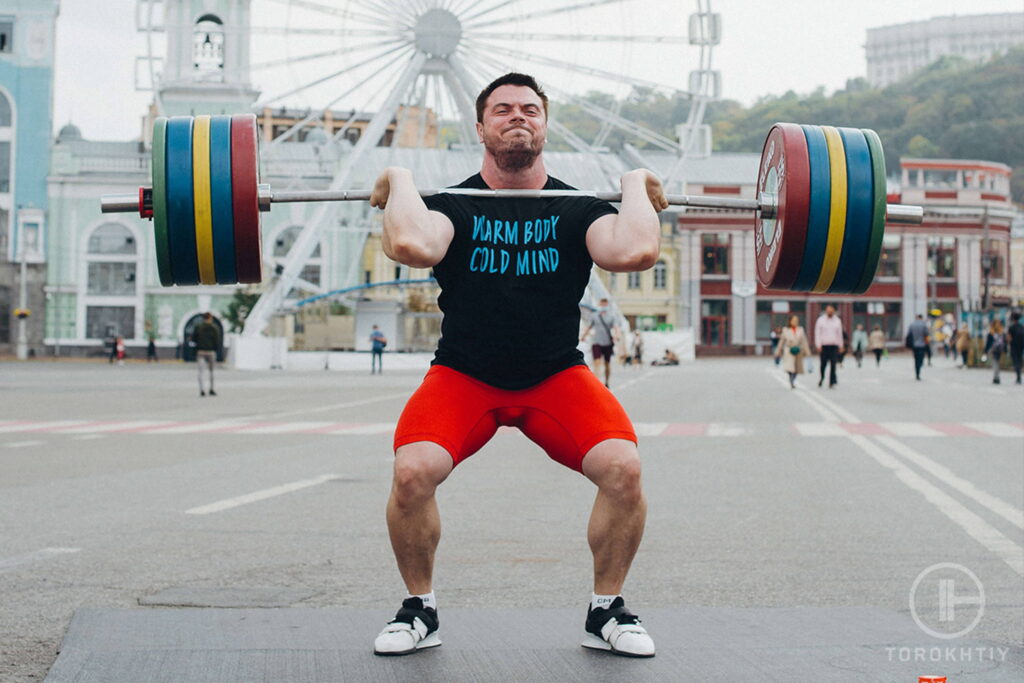
In clean the pull lasts longer (0.52 s) than in the snatch (0.45 s), primarily due to the difference in the weight of the bar. If we compare the time indicators of the transition and the full extension phase in two exercises, then in the snatch the transition is shorter (0.13 s) than the full extension (0.17 s), and vice versa in the clean – the transition is longer (0.15 s) than the full extension (0.13 s). First of all, the transition in the clean is longer than in the snatch, because the weight of the bar is much greater, and the speed of movement is less. The full extension is faster, since in the clean, the body is more vertical, that is, its angle of inclination is less
Another important technical snatch vs clean: when performing a snatch with a wide grip, it is almost impossible to use the elastic properties of the bar, and the path of application of efforts is much longer than in clean. Therefore, the decisive factor in the success of the snatch is the technical component, namely the maximum speed and the maximum height. That is why, success in the snatch directly depends on: the speed of contraction of the athlete’s muscles, the reactivity of the nervous system and the vector of application of efforts, that is, on the level of technical skill.
In the clean, the result very much depends on the ability to use the elastic properties of the barbell. The head coach of the USSR national team Alexei
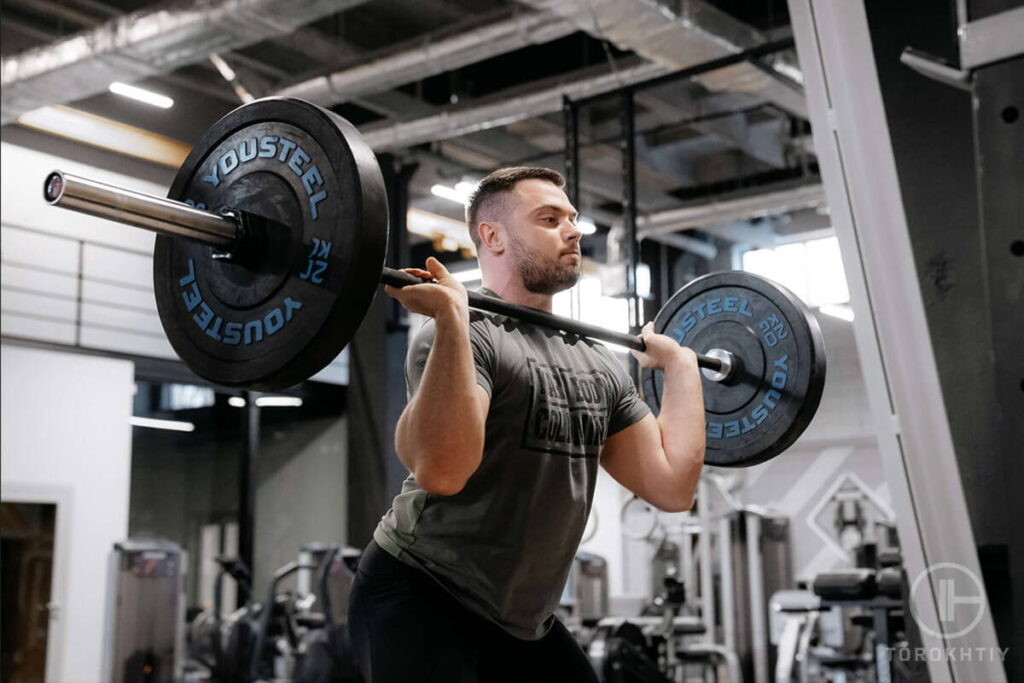
Medvedev investigated this issue back in 1986. In the clean, a double accentuated application of efforts is necessary – in pull and in power position. A more powerful pull is needed in order to use the elastic properties of the barbell and achieve maximum speed in this short section.
Also, the acceleration power allows you to “free yourself” for a short time to switch the work of the muscles of the legs, torso and arms from the extension mode to the turnover and create rigidity for receiving the barbell in the squat. In order for this element to be possible, active efforts must be applied already in the pull.
It is important to remind athletes that a too powerful or explosive start of movement in snatch and clean, in which the force on the support will exceed 150%, can lead to the loss of rigid interaction between the links of the body in the pulling or power position phase, which will inevitably lead to a series of errors in subsequent phases of the movement.
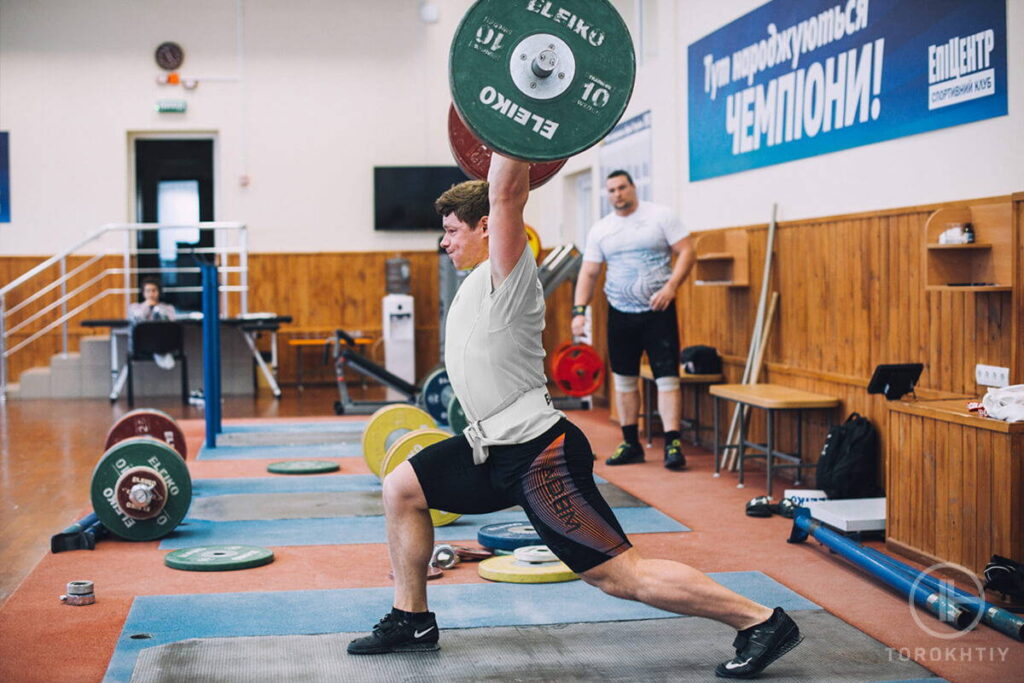
If we compare the forces applied to the support, then in the clean they are less than in the snatch (by 5-8%) in the pull and power position. This is due to the weight and the length of the path of the applied efforts.
Thus, this comparative analysis clean vs snatch indicates the biomechanical differences. Therefore, it is NOT recommended for BEGINNERS athletes to combine exercises aimed at improving the technique of both exercises in one session. Performing in one session is only acceptable during the competitive period, when the goal of the training is to prepare the athlete for the stressful conditions of the competition.
FAQ
Is a Snatch Harder Than a Clean?
The most common answer is that snatch is more technically difficult and clean requires way more strength. In general, you ought to be able to clean more than snatch. This is due to the fact that you can or at least should be able to front squat way more than you can overhead squat.
What’s the Difference Between a Clean and Jerk and a Snatch?
The Clean & Jerk lets you employ all of your unbridled strength, whereas the snatch is all about form, coordination, and mobility. Both movements increase muscular mass, speed, and strength.
Conclusion
Thus, this analysis points to the biomechanical differences between the snatch and the clean. Understanding this will allow coaches and athletes to more consciously select assistance exercises for training programs. And now it’s your turn! Are you team snatch or clean? What are your fitness goals with either one? Let me know in the comments!
Also read:
- Power Clean vs Deadlift
- Clean vs Power Clean
- Hang Clean vs Power Clean
- Clean and Jerk vs Clean and Press
Why Trust Us?
With over 20 years in Olympic Weightlifting, our team does its best to provide the audience with ultimate support and meet the needs and requirements of advanced athletes and professional lifters, as well as people who strive to open new opportunities and develop their physical capabilities with us.
All products we select are primarily approved and tested by the Olympic Weightlifting Champion Oleksii Torokhtiy. Under his guidance, we provide honest and reasonable assessments of the products we review by checking their characteristics, packaging, design, comfort and durability features, and general product rating. We select products from only high-quality and trusted sports brands, thus vouching for their quality.
The product testing process is described in more detail here
Why Trust Us?
With over 20 years in Olympic Weightlifting, our team does its best to provide the audience with ultimate support and meet the needs and requirements of advanced athletes and professional lifters, as well as people who strive to open new opportunities and develop their physical capabilities with us.
By trusting the recommendations of our certified experts in coaching, nutrition, dietology, and sports training programming, as well as scientific consultants, and physiotherapists, we provide you with thorough, well-considered, and scientifically proven content. All the information given in the articles concerning workout programming, separate exercises, and athletic performance, in general, is based on verified data. We ensure that you can rely on our professionals’ pieces of advice and recommendations that can be treated as personalized ones which will benefit you and fully meet your needs.
The product testing process is described in more detail here
Author: Sergii Putsov
Head of Sport Science, PhD
Best Results: Snatch – 165 kg,
C&J – 200 kg
Sergii Putsov, Ph.D., is a former professional weightlifter and National team member, achieving multiple medals in the 94 kg weight category at national competitions. With a Master’s degree in “Olympic & Professional Sport Training” and a Sport Science Ph.D. from the International Olympic Academy, Greece, Sergii now leads as the Head of Sport Science. He specializes in designing training programs, writing insightful blog articles, providing live commentary at international weightlifting events, and conducting educational seminars worldwide alongside Olympic weightlifting expert Oleksiy Torokhtiy.
Reviewed by: Oleksiy Torokhtiy
Olympic Weightlifting Champion
Best Results: Snatch – 200 kg,
C&J – 240 kg
Oleksiy Torokhtiy is a professional athlete boasting 20 years of experience in Olympic weightlifting. With multiple European and World titles under his belt, he has showcased his prowess in two Olympic Games (Beijing 2008 and London 2012). Upon concluding his illustrious career, Oleksiy dedicated himself to coaching. By 2022, he had conducted over 200 weightlifting seminars worldwide. He is the visionary behind an international sportswear and accessories brand known for its motto, “Warm Body Cold Mind.” Additionally, he is an esteemed author and the creator of a series of training programs and eBooks.

